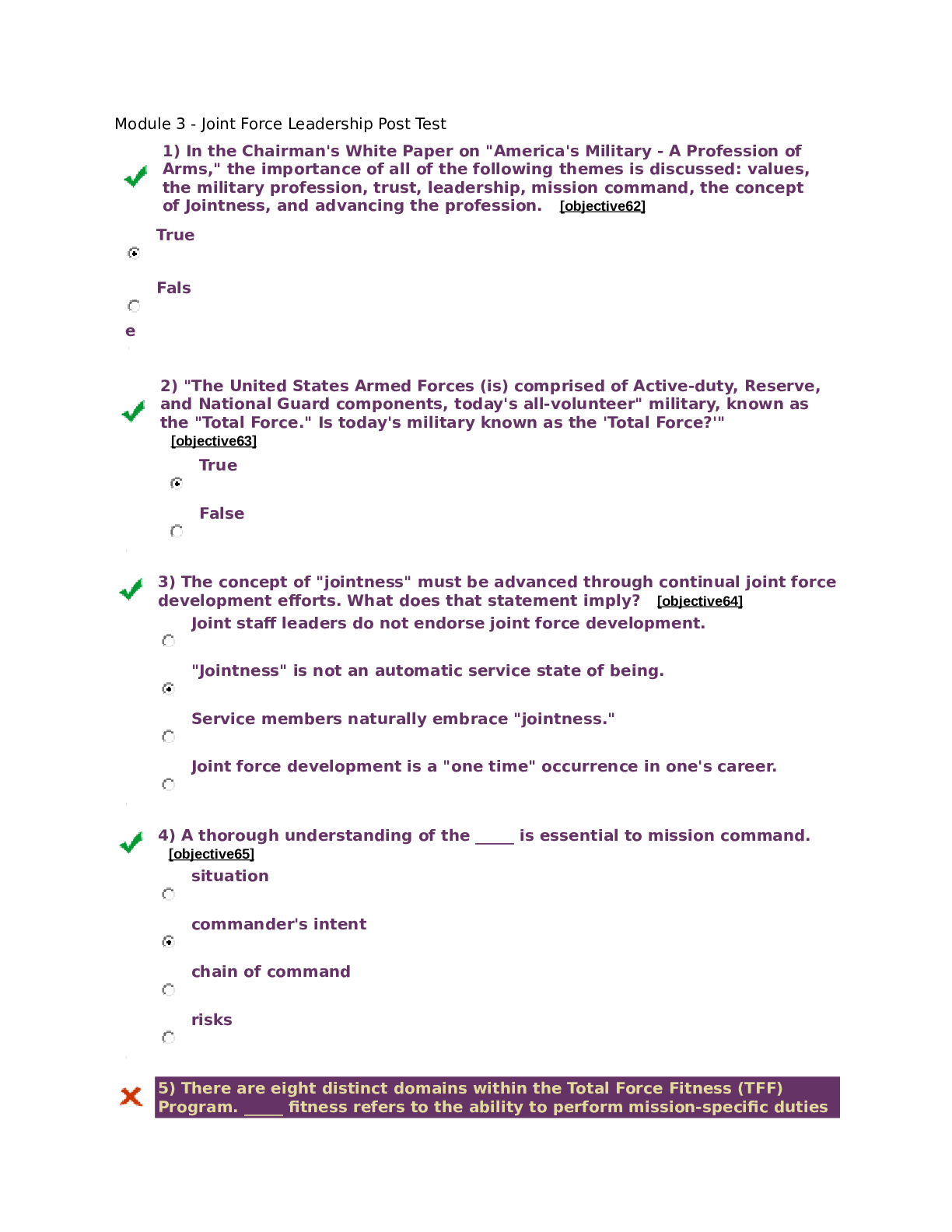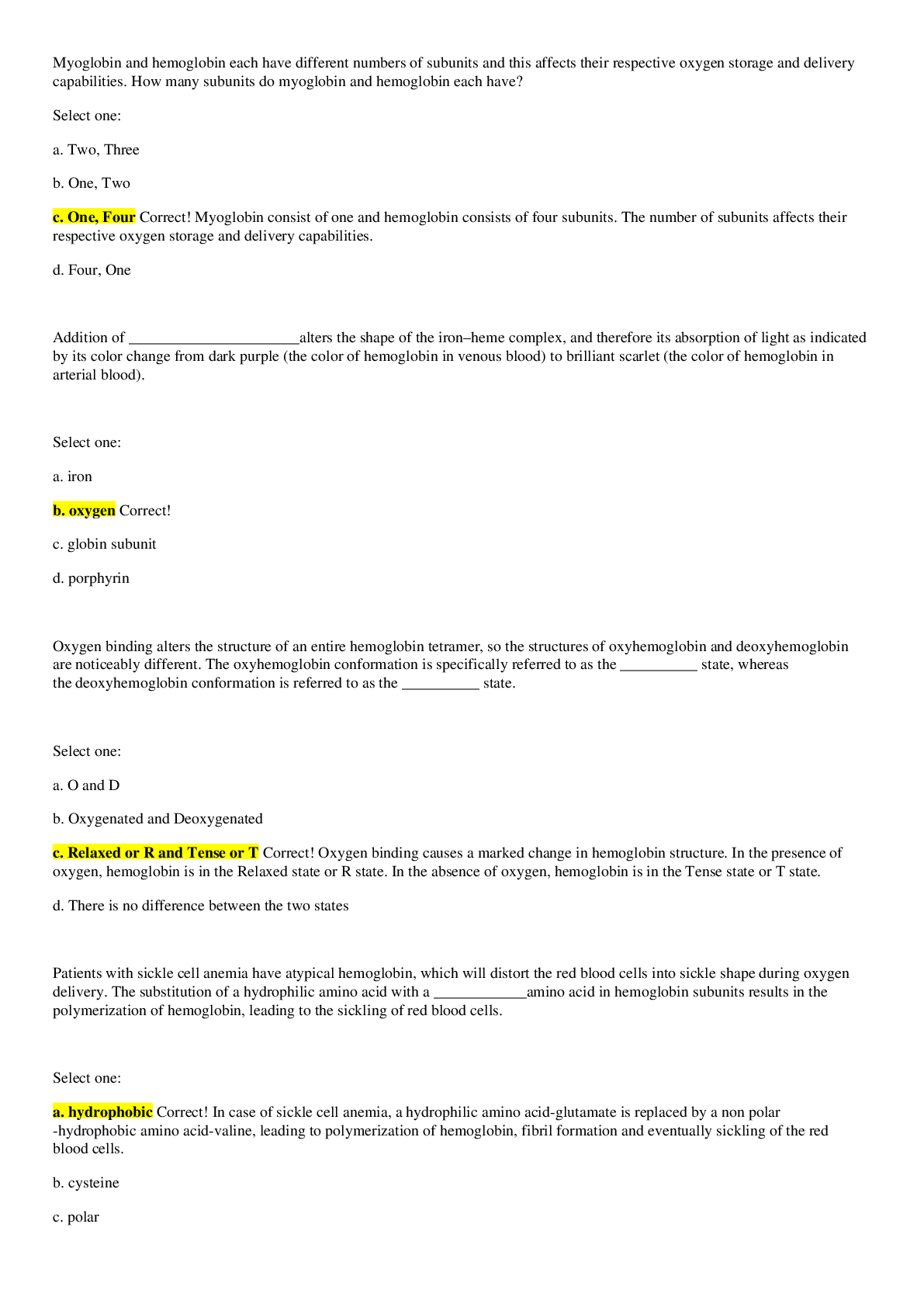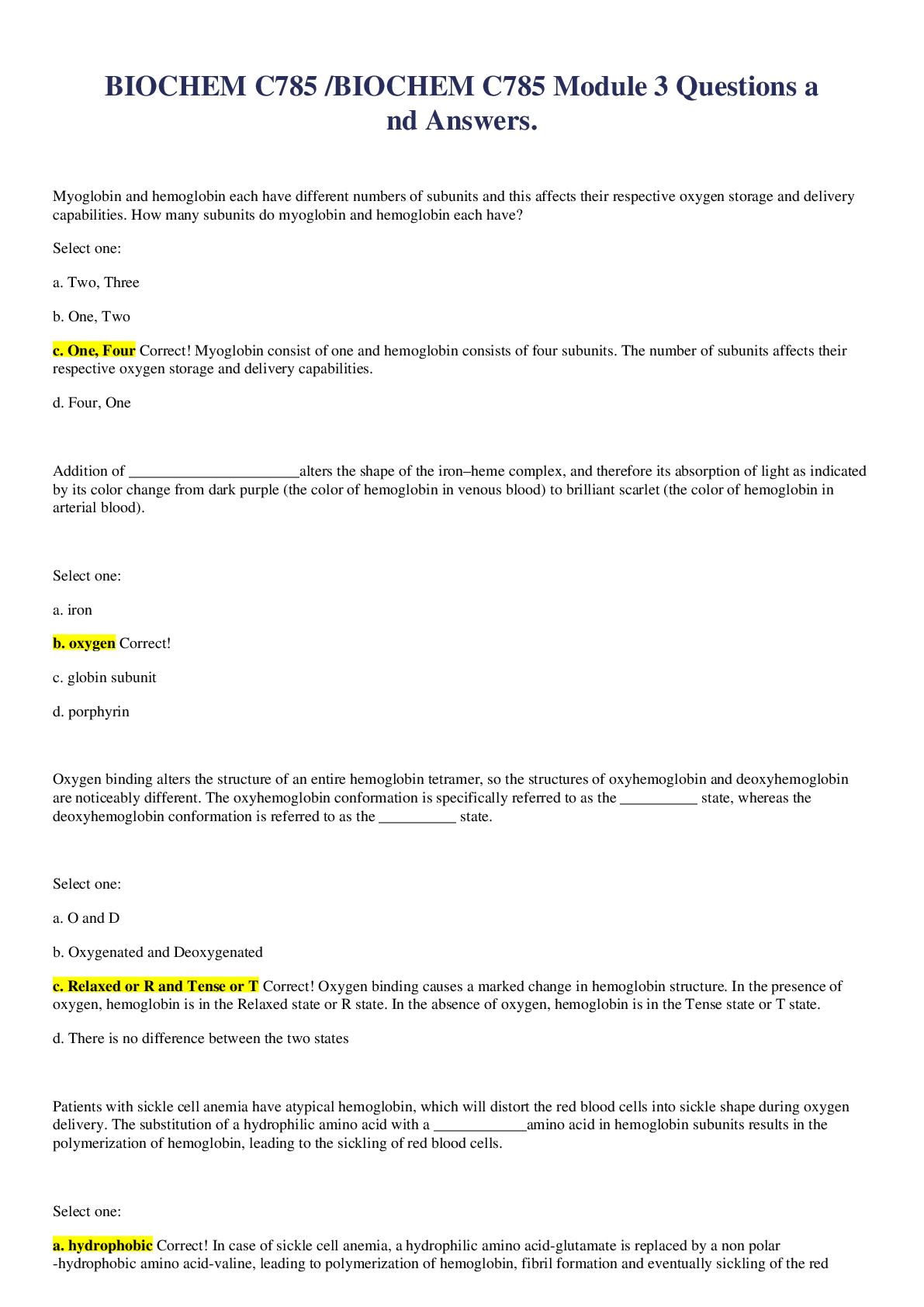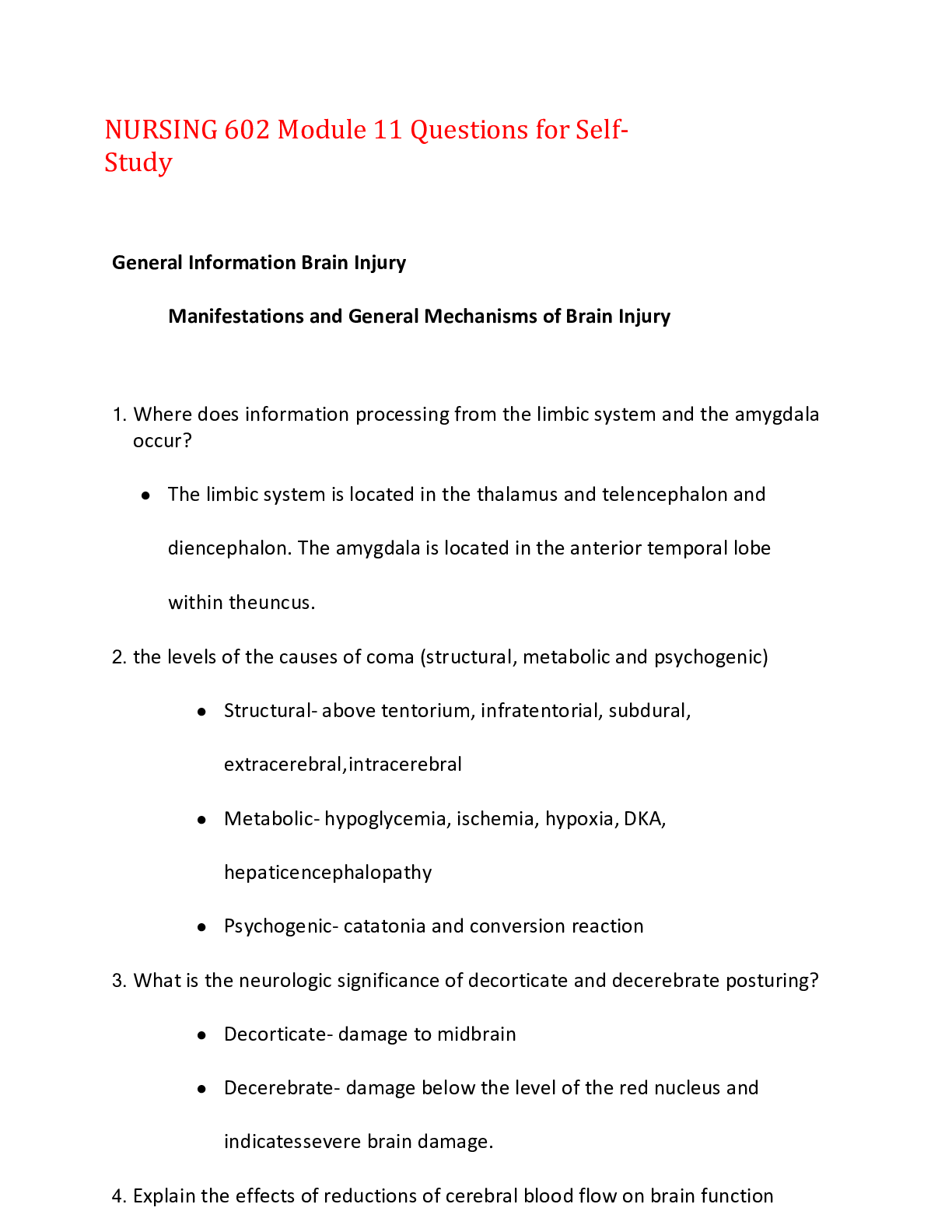NURSING 602 Module 3 Questions for Self-Study,100% CORRECT
Document Content and Description Below
NURSING 602Module 3 Questions for Self-Study Neoplastic Alterations in Cells Cancer Epidemiology and Risk Factors 1. Outline the common risk factors associated with the development of cancer ... a. Tobacco use i. Increased rate of small cell and non-small cell lung ii. Survival rate is 18.6% b. Nutrition i. Attributed to impaired glucose metabolism and contribute to cancer risk ii. High glycemic load is associated with gastric, digestive (upper and lower) tract, endometrial, ovarian cancers iii. Over consumption of red meat can lead to colon and rectal cancer c. Excess body weight d. Alcohol i. Excessive amounts lead to several types of cancer e. Ultraviolet Radiation f. Infections g. Physical Inactivity 2. 3. Along with lung cancer what other cancers are associated with tobacco use? a. Pancreas, kidney, mouth 4. Describe the pathophysiology of sustained proliferative signaling relative to cancer a. Is caused by excessive activity of proto-oncogene derived growth factors 5. Describe the pathophysiology of evasion of cell growth suppressors and mechanisms that allow evasion of normal immune protection relative to cancer a. Inactivation of tumor suppressor genes that regulate the cell cycle and halt cell proliferation and prevent mutations. 6. Describe the pathophysiology of enabling replicative immortality relative to cancer a. Caused by inhibition of shortening telomere caps with each division leading to cell death 7. Describe the pathophysiology of tumor producing inflammation relative to cancer a. These recruit phagocytes and tumor associated macrophages known as TAMS which enhance tumor growth and spread 8. Describe the pathophysiology of genomic instability relative to cancer a. Promote DNA mutation with gene expression 9. Describe the pathophysiology of resisting apoptosis relative to cancer a. Cancer suppresses apoptosis which leads to spread of cancer growth and increases resistance to chemotherapy 10. Describe the pathophysiology of deregulation of cellular energetics relative to cancer a. Oncogene induced synthesis of aerobic glycolysis can increase glucose transport into the cell to support cancer cell proliferation Nomenclature and Grading/Staging of Tumors 1. Differentiate between the characteristics of benign and cancerous tumors and cancer in situ a. Benign: tumors grow more slowly and are well demarcated, have more vascularity and are similar to normal tissue. b. Malignant tumors: invade tumor cells into local tissues, they often have necrotic areas and are dysfunctional. c. Anaplasia: the greater degree of anaplasia, the more aggressive the tumor. Varies in cell size and shape, enlarged nuclei and abnormal mitosis. 11. Outline the grading/staging of tumors a. Based on the degree of anaplasia. Staging is based on location, cell type, tumor size, extent of local growth, lymph node involvement, organ involvement and presence of distant metastasis. Carcinogenesis and Metastasis 1. Discuss the processes of initiation, promotion and progression in the multistep process of cancer development a. Carcinogens are the key to the initiation of many cancers. The genetic mutations of tumor suppresser genes and pro-oncogenes are present. Promotion of cancer is a replication of abnormal cells. Due to apoptosis, the cancer cells are able to grow and survive. During the progression stage, the cells multiply and establish a permanent growth advantage, they then exhibit malignant behavior. 2. Discuss the process of tumor cell metastasis a. The process where cancer cells escape the tissue of origin and spread to other tissues. They spread through lymph or vascular systems. Childhood Cancers 1. What germ layer do most childhood cancers arise? a. Mesodermal germ layer, adults come from the epidermal germ layer 2. Which chromosomal abnormalities are associated with childhood cancers? a. Aneuploidy, amplification, deletion, translocations 3. Aside from leukemia, what are the locations/types of other childhood cancers? a. Brain and central nervous system tumors are the most common solid tumors. [Show More]
Last updated: 1 year ago
Preview 1 out of 4 pages

Buy this document to get the full access instantly
Instant Download Access after purchase
Add to cartInstant download
We Accept:

Reviews( 0 )
$9.00
Document information
Connected school, study & course
About the document
Uploaded On
Oct 03, 2021
Number of pages
4
Written in
Additional information
This document has been written for:
Uploaded
Oct 03, 2021
Downloads
0
Views
38

























